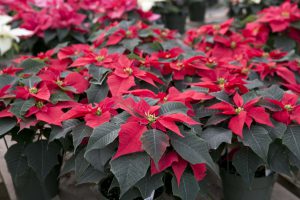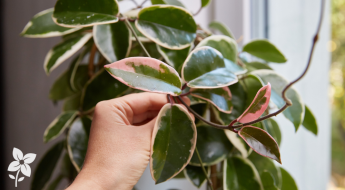
Types of Succulents
By Rob Sproule
A World of Succulents
Aeoniums
Aloes
Crassula
Haworthia
Kalanchoe
“The essence of the beautiful is unity in variety.”
– Felix Mendelssohn
A World of Succulents:
Feeling overwhelmed in the succulents section? You’re not alone; succulent displays are a glimpse into a strange botanical world. Here’s a primer into identifying the 5 main genus of succulents that you’re likely to be choosing from. Each has a different look, use, and even care requirements. Happy succulent watching!
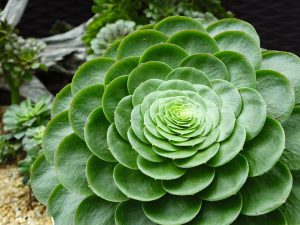
Aeoniums:
Sleek and bold, these are sought after both for houseplants and dramatic container stuffers. The spoon shaped leaves radiate from the core into a smooth symmetrical spiral (which follows the same mathematical pattern as sunflowers and spiral galaxies, but that’s another story). A lot of people are surprised at how they grow. You’ll start with a rosette sitting compactly in the pot. As it matures, it grows straight up, so that the rosette becomes the head of a tall strong stalk supporting it.
It will thrive outdoors in the summer (preferably with some afternoon shade). Bring indoors in the Fall, put it near a sunny window, and cut way back on watering. It will continue to grow; it’s not uncommon for the stalks to be 1 metre tall or more.
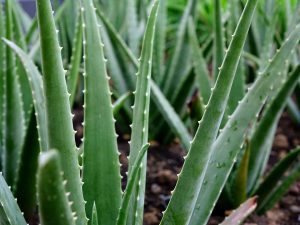
Aloes:
Architecturally dramatic, aloes make ideal centrepieces for succulent and even small annuals containers. They tower over the rest and, if you’re lucky, send a towering central spike that, when it blooms, is one of the world’s best hummingbird attractors. While Aloe Vera is by far the most popular, in my opinion it’s not the most attractive. Other varieties are taller, fatter, spikier and more imposing. They are have the same general shape.
Provide bright light to thrive. Near a sunny window indoors is best. They’ll appreciate some afternoon shade if planted in a container outdoors. Wait until an inch of soil is dry before watering again. Depending on their light levels, you’ll need about weekly in the summer and monthly in winter.
Learn more about succulents, with Alberta’s Best Gardening Blog

Crassula:
According to Feng Shui, a Jade tree will bring financial prosperity where it lives, which is why it adorns so many restaurants and businesses. The hard-to-kill plant with its dark puffy leaves and long lifespan is this types most famous member. Expect other crassula to look like Jades but be smaller. They respond well to pruning and need to be kept root bound. If you think the pot is a size too small, you’re good.
If you tend to dote on your plants, you’ll need to learn restraint. Too much water is the fastest way to kill them. Ensure they have proper drainage and fertilizer once a year in the spring.
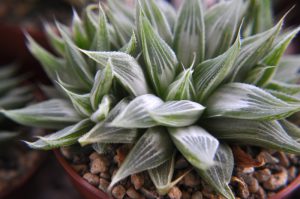
Haworthia:
These are jewels of the succulent world. They’re diminutive yet bold, subtle but fierce, and surprisingly easy to care for. Also called “Tiger Jaws”, their leaves are often striped and they grow slowly into dense clump, making them easy to propagate. They resemble small aloes, but don’t be fooled as the care requirements are significantly different.
Haworthia are the most versatile succulent. It grows well in moderate light that would make other varieties sickly. It can tolerate more water than other succulents. You’ll see them in arrangements, wedding favours, and fridge magnets. They’re a high-fashion succulent and often blended with airplants in design.
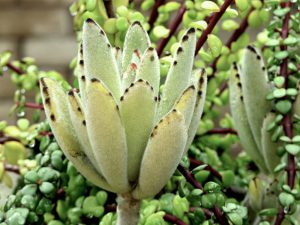
Kalanchoe:
The weirdest and most diverse genus, it’s often hard to tell that different species are even related. It’s also my favourite group, with whimsical succulents like “Flapjacks” and “Chocolate Soldier.” Kalanchoes remind us not to take succulents too seriously. Far from the drama of aloes and the symmetry of aeoniums, they bring a splash of chubby, irregular, often coloured or textured leaves to liven up the party.
You’ll want to water when the surface is dry an inch down and avoid splashing on the leaves. Fertilize in the spring when you see the new growth starting. Keep in bright light and they’re live for generations. They’re poisonous, so keep them up high if you have little fingers or curious pets around.
Did you know that we offer succulent classes and succulent terrarium workshops here at Salisbury Greenhouse and Salisbury at Enjoy? Sign up for our newsletter to get first dibs on a seat at our latest events and workshops.



